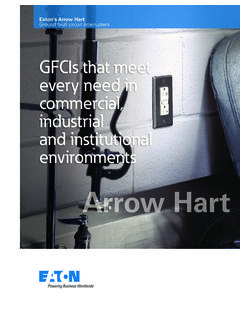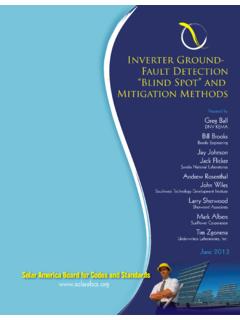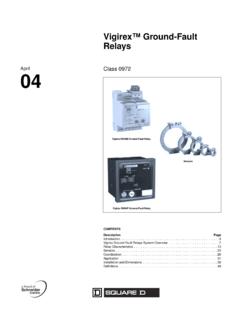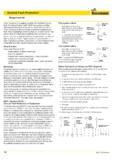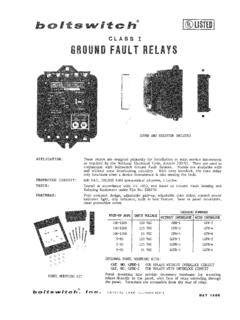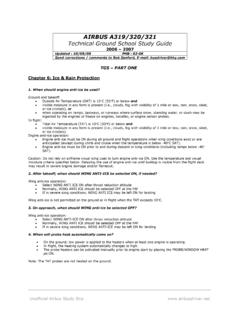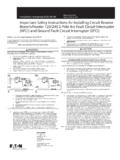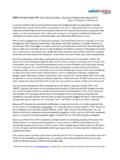Transcription of GROUNDING AND GROUND FAULT PROTECTION OF …
1 Presented at the 2003 IEEE IAS Pulp and Paper Industry Conference in Charleston, SC: IEEE 2003 - Personal use of this material is AND GROUND FAULT PROTECTION OF MULTIPLEGENERATOR INSTALLATIONS ON MEDIUM-VOLTAGEINDUSTRIAL AND COMMERCIAL POWER SYSTEMSPART 2: GROUNDING METHODSAn IEEE/IAS Working Group Report[Working Group Members] - Prafulla Pillai (Chair), Alan Pierce, Bruce Bailey, Bruce Douglas,Charles Mozina, Clifford Normand, Daniel Love, David Shipp, Gerald Dalke, James R. Jones, JayFischer, Jim Bowen, Lorraine Padden, Louie Powell, Neil Nichols, Ralph Young, Norman Group Chair:Prafulla PillaiKellogg Brown & Root, , Texas 77002 Abstract - The paper discusses typical groundingpractices and GROUND FAULT PROTECTION methods formedium voltage generator stators, highlighting theirmerits and drawbacks.
2 Particular attention is given toapplications of multiple generators connected to a singlebus. The paper also provides an overview of thegenerator damage mechanism during stator groundfaults. Problem areas associated with each method ofgrounding are identified and solutions are discussed. Thepaper also provides a list of references on the topic. Thepaper is intended as a guide to aid engineers in selectingadequate GROUNDING and GROUND FAULT PROTECTION schemesfor medium voltage industrial and commercialgenerators for new installations, for evaluating existingsystems, and for future expansion of facilities, tominimize generator damage from stator GROUND topics are presented in four separate parts, Part 1through Part 4.
3 Part 1 covers scope, introduction, userexamples of stator GROUND failure, and theoretical basisfor the problem. Part 2 discusses various groundingmethods used in industrial applications. Part 3 describesprotection methods for the various types of groundingand Part 4 provides a conclusion and bibliography ofadditional resource GENERALT here are several methods of power system GROUNDING . Theseinclude low-resistance grounded (LRG), effectivelygrounded, reactance grounded, high-resistance grounded(HRG), and ungrounded. Source GROUNDING may beaccomplished by the GROUNDING of the generator(s) and/orpower transformer(s). GROUNDING transformers may beutilized in lieu of source GROUNDING . A brief overview of eachof these GROUNDING methods is given LOW-RESISTANCE GROUNDED SYSTEMIn low-resistance GROUNDING of the source generator, thegenerator neutral is connected to GROUND through a resistor,as shown in Fig.
4 1, Part 1. The resistor limits the GROUND faultcurrent to several hundred amperes (typically 200 600 A).The FAULT current is selected to minimize FAULT damage but atthe same time allow sufficient current for selective trippingof the protective devices. The lower limit was historicallybased on electro-mechanical relay sensitivity and the upperlimit is based on resistor losses during a GROUND FAULT anddamage to cable multiple sources, the total GROUND FAULT current can bevery high. Low-resistance GROUNDING is generally used forgenerators connected to a common bus where relayingselective with feeder relaying is required. For bus-connectedgenerators operated in parallel with transformers, connectingthe wye-connected winding of the transformer to thegenerator bus would allow the transformer neutral to provideone GROUND when the generator is out of are many advantages which can be attained by usinglow-resistance GROUNDING .
5 These include sufficient faultcurrent magnitudes to allow sensitive and selective relayingwith feeders and bus-tie breakers, easy inclusion ofadditional sources, limitation of transient overvoltages tomoderate values, and potential cost savings over othergrounding are some disadvantages associated with low-resistancegrounding. The main disadvantage is the possibility ofsignificant burning of the generator stator iron laminationsfrom high GROUND FAULT currents, as explained in Part 1. Also,with multiple GROUND sources, high currents due to parallelsources can cause severe FAULT damage, and large variationsof available FAULT current can cause relay coordinationproblems. Consideration should be given to selectingappropriate surge arresters for the GROUNDING method.
6 For a system with multiple sources, some of the variations inthe low-resistance GROUNDING method are discussed ) Single Point GROUNDING Single point GROUNDING requires that only one source begrounded at any given time. This is the simplest method oflow-resistance GROUNDING . Since there is only one groundsource, it provides lower GROUND FAULT current than withmultiple point GROUNDING . Also, relay coordination is simplesince there is no variation in GROUND current. In addition,third-harmonic circulating currents are principle disadvantage of single point GROUNDING isthat if the grounded power source is out of service, thesystem will operate ungrounded unless an alternate GROUND isestablished. This requires special operating the system neutral through a neutral derivingtransformer on the bus is an effective means of overcomingthis ) Multiple Point GROUNDING In this method, the neutrals of individual sources(transformers and generators) are each grounded through aseparate resistor with GROUND FAULT current from each sourcelimited to the selected value.
7 Multiple point GROUNDING offerssimplified operation and is most commonly used with low-resistance GROUNDING , assuring that the system will always begrounded. However, resistor selection can be difficult. When several sources are paralleled, the total groundfault current can increase to high values, causing severe faultdamage. In such cases, the GROUNDING resistance should behigh enough to limit the FAULT current to a safe value when allof the parallel sources are in service, and should be lowenough so that when source(s) are removed, sufficient faultcurrent flows for relay operation. Addition or removal of parallel sources causes widevariations in FAULT current and makes relay coordinationdifficult. Another problem is that the parallel paths to groundintroduce the possibility of circulating third harmoniccurrents, which can cause overheating of the generators atless than full )Common GROUND with Neutral Switching (notRecommended):Here, each source is connected to a common neutral pointthrough a switching device and the neutral point is groundedthrough the low resistance.
8 The advantages include lowground FAULT current due to single GROUND , known maximumground current, minimizing of the problems of varyingground current with addition or removal of generators, andsimplified relay coordination. This is a previously adoptedmethod but no longer being used due to safety issues asexplained are several disadvantages with this method ofgrounding. The most significant is a safety issue ,attempting to switch the neutral at the same instant a groundfault occurs could be extremely hazardous to operatingpersonnel, unless adequate switching devices and safetyprecautions are provided. Also, cost is increased due to theneed for several neutral switches or circuit breakers.
9 Inaddition, unless a key-interlock system is used, specialoperating procedures are required to close another operatingground point prior to taking the first one out. This mayintroduce operator errors causing ungrounded GROUND sources should be in close proximity in orderto allow quick interchanging of neutral switching operations,to minimize conductor length of neutral bus connection foreffective GROUNDING , and to avoid inadvertent opening ofinterconnection thereby preventing ungrounded operation. Ifthe neutral is left connected when a generator is taken out ofservice, all the phase voltages will be elevated in magnitudeduring a GROUND FAULT . Also, there is a possibility ofaccidental contact with an energized bus that leads to theground these reasons, the practice of employing a commonground with neutral switching should be EFFECTIVELY GROUNDED SYSTEMFor effectively grounded systems, the neutral isconnected to GROUND through a sufficiently low impedance,intentionally inserted such that the ratio X0/X1 is positive andless than 3, and the ratio R0/X1 is positive and less than specific criteria are to limit the build-up of voltages inexcess of limits established for apparatus, circuits, or systemsso grounded.
10 Solidly grounded systems have no impedanceinserted intentionally between neutral and the natural zero sequence impedance of asynchronous generator is typically about half the subtransientpositive sequence reactance, the GROUND FAULT current thatwants to flow from a solidly grounded generator is greaterthan the three-phase FAULT current. However, NEMA standards [1] do not require that standard generators bebraced for the mechanical stresses associated withunbalanced FAULT currents in excess of the magnitude of athree-phase FAULT at the terminals of the generator. Therefore,the neutrals of standard generators should not be connectedto GROUND without some limiting are, however, instances in which the generator willbe applied on 4-wire systems.










